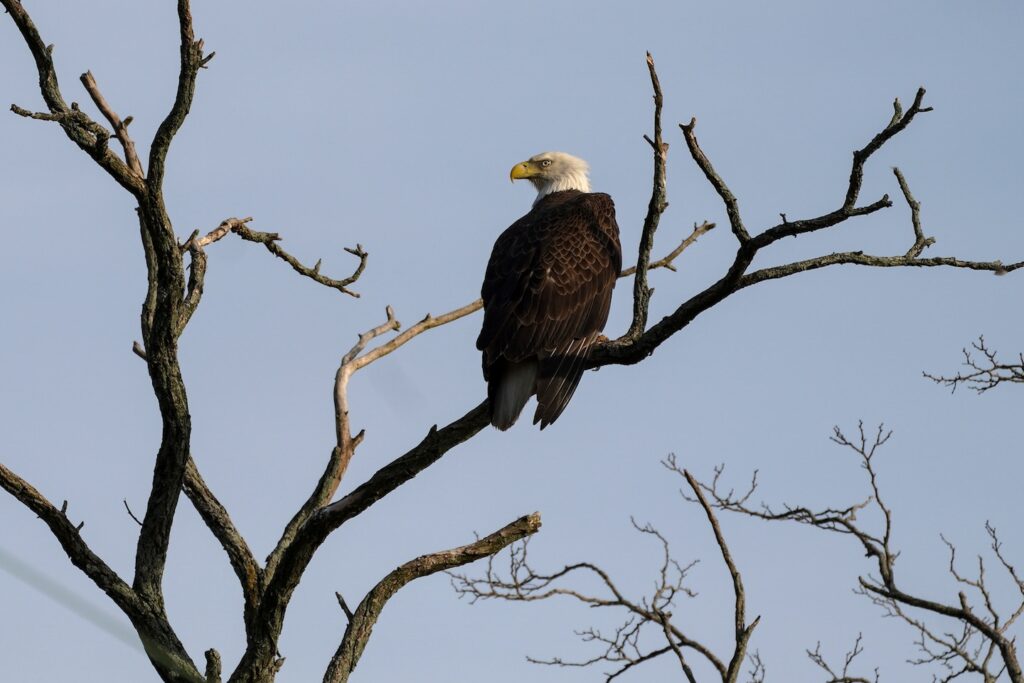Jack E. Davis is a distinguished professor of history at the University of Florida and author of Bald Eagle: The Improbable Journey of an American Bird.
Minnesota lawmakers recently introduced a bill to designate the bald eagle (Haliaeetus leucocephalus) as the national bird of the U.S. The National Eagle Center, a Minnesota-based nonprofit educational organization, is leading the effort, and the Midwest Sovereign Tribal Alliance, which represents 35 Native American nations, has passed a resolution of support.
I know what you're thinking: “What? Everyone already knows the bald eagle is our national bird.”
After all, the bald eagle's glowing likeness appears on the front of the Great Seal of the United States and the seal of nearly every federal agency. It's stamped on paper currency, sewn onto military uniforms and perched on millions of flagpoles. It graces bumper stickers and corporate logos, motorcycle jackets and tote bags, T-shirts and drink labels, and even rugs, curtains, lampshades, cereal bowls, oven mitts, bath towels, bedspreads, pillowcases and pajamas almost everywhere we turn. Many government websites, like Wikipedia, state that the bald eagle is the national bird of the United States, as The Washington Post reported on April 3.
While the bison is officially recognized as the national mammal, the oak as the national tree, and the rose as the national flower, neither Congress nor the president has bestowed the honor of national bird on any feathered creature.
The confusion starts with the Great Seal of the United States. In 1782, with victory over Britain on the horizon, Congress approved the new nation's Great Seal with a handsome bald eagle in the center. (Benjamin Franklin never suggested a turkey be the Great Seal; that's another story.) We've been confusing the bird's public perch with appointed office ever since. Some say that because the Great Seal has a turkey on it, it's the national bird of the United States. But by that logic, the pyramid, which is also on the Great Seal, is the national landmark of the United States.
With no national bird yet named, Congress could bestow the honor on any bird. Votes might garner species associated with lawmakers' favorite sports teams, such as an oriole, cardinal, jay or penguin. All of these are magnificent birds, but none are as majestic as the bald eagle; none match the eagle's signature traits of unity with our country and culture. Most striking are its vibrant yellow eyes, fixed firmly beneath heavy brows, giving it a piercing, “don't tread on me” gaze that's the anatomical equivalent of a patriot's cry for independence.
The eagle also has enduring historical authority. It has been the face of the national coat of arms since the early Roman Empire. But before 1782, other iconic eagles were common species never found in nature, usually with jet black plumage, a menacing crest, and bright red talons and beaks. The Founding Fathers claimed the authenticity of the Great Seal. The bald eagle is both a real species and one found only in North America. A truly indigenous American eagle claimed national and cultural distinctiveness that set it apart from European influences.
Among its qualifications for national bird, the bald eagle's historically complicated relationship with the American people is equally compelling. Native Americans lived peacefully with the bald eagle for millennia, embracing the high-flying raptor as both a spirit bird and a relative. But for more than two centuries, other Americans tried to eradicate the bald eagle. They accused the winged predator of stealing livestock and kidnapping babies, and carried out a mass slaughter similar to that of the hapless bison. By the late 19th century, bald eagle sightings had become rare in the East and Midwest.
Fortunately, the country recovered when Congress passed a landmark law in 1940 protecting bald eagles from deliberate harm. Unfortunately, five years later, DDT hit the market, contaminating the land and water and working its way up the food chain. By 1963, the already precarious population had plummeted to a dire 487 nesting pairs in neighboring states.
Again, Americans rose to the occasion: In 1972, the EPA banned the domestic sale of DDT, paving the way for federal and state restoration initiatives and creating one of the most iconic conservation success stories of the era. Today, bald eagle populations across the continent have grown to about 500,000 birds, back to numbers seen when Congress adopted the Great Seal.
Elevating the bald eagle to its lofty status as our national bird perhaps means more today than it did in 1782. More than one-third of the world's national birds are at risk of extinction. Having proudly graduated from the federal endangered species list, the bald eagle is a role model for those fighting for survival. Nesting in our parks, schoolyards, neighborhoods and recreation areas, these noble birds have embraced the company of those who once sought to eradicate them.
Today, we cannot imagine life without bald eagles. Our enjoyment of spotting them in the wild, our continued commitment to tracking eagles and their chicks with nest cameras, and our unflinching commitment to protecting them are testaments to the evolving sensibilities of this country. We owe it to the American people, to Native Americans, and to persistent tribes to finally officially recognize the bald eagle as the national bird of the United States.



